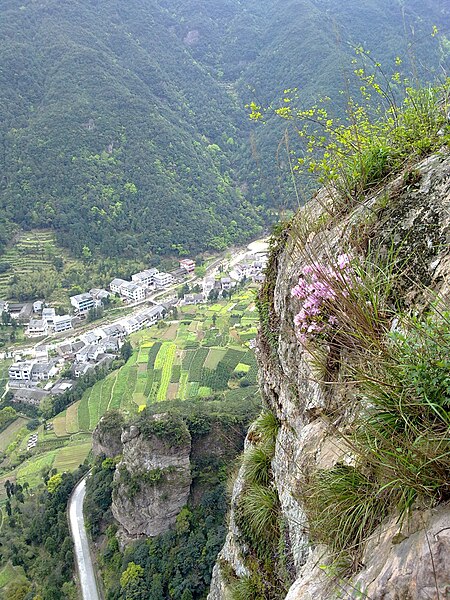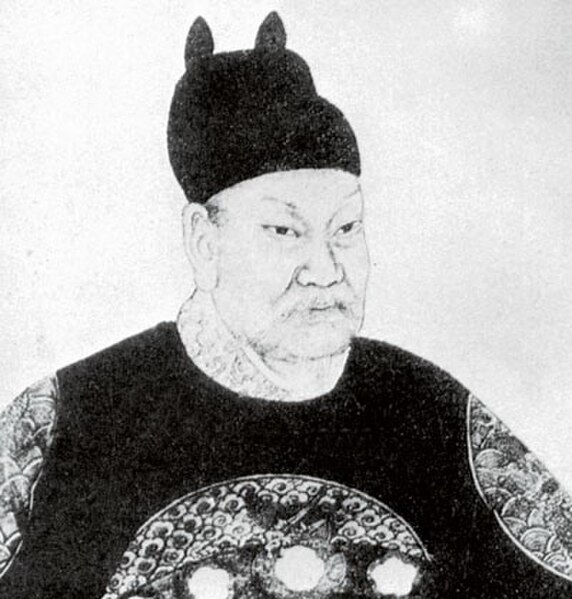Yandang Mountains or Yandangshan refers, in the broad sense, to a coastal mountain range in southeastern Zhejiang province in eastern China, covering much of the prefecture-level city of Wenzhou and extending to the county-level city of Wenling in Taizhou prefecture. The mountain range is divided in two by the Oujiang River, the two parts being the North Yandang and South Yandang. More narrowly, Yandangshan is also used to refer to Mount Yandang, a specific part of the North Yandang around an ancient caldera near a small town of the same name. The highest peaks of North Yandang are located here, and this is also the main tourist spot. In this article, name "Yandang Mountains" is used to refer the mountain range and "Mt. Yandang" to refer to the caldera.
Rock formation in the Yandang Mountains
Qing dynasty view Yandangshan.
Lingfeng Peak. The big crack is the Guanyin Cave, with the lower gate of the Guanyin Temple just visible.
A view from the Lingyan Rock.
Zhejiang is an eastern coastal province of the People's Republic of China. Its capital and largest city is Hangzhou, and other notable cities include Ningbo and Wenzhou. Zhejiang is bordered by Jiangsu and Shanghai to the north, Anhui to the northwest, Jiangxi to the west and Fujian to the south. To the east is the East China Sea, beyond which lies the Ryukyu Islands. The population of Zhejiang stands at 64.6 million, the 8th largest in China. It has been called "the backbone of China" because it is a major driving force in the Chinese economy and being the birthplace of several notable people, including the Chinese Nationalist leader Chiang Kai-shek and entrepreneur Jack Ma. Zhejiang consists of 90 counties.
Views of Yandang Mountains
Portrait of Qian Liu, the King of Wuyue.
Song dynasty era (1223) city gate in Shaoxing.
This tripod planter from the Ming dynasty was found in Zhejiang province. It is housed in the Smithsonian in Washington, D.C.








